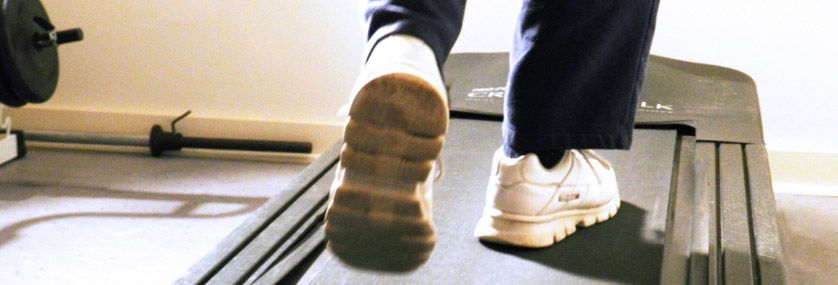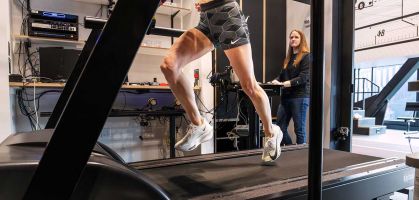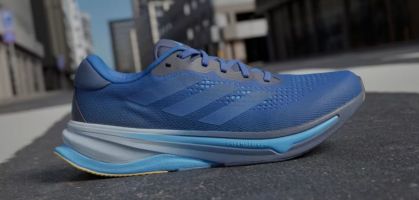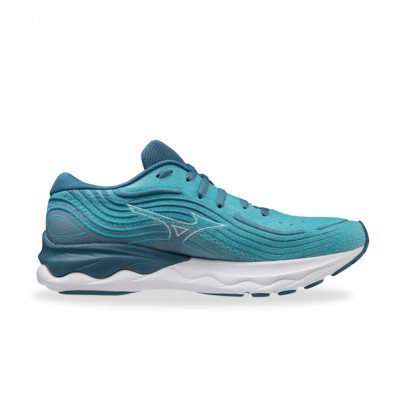This is a guest post. Today we have the luxury of having Mikel Izquierdo Redín, professor and director of the Department of Health Sciences at the Public University of Navarra.
It seems that at this point, no one doubts the healthy effects of physical exercise, both at a preventive level and as an adjuvant to many medical treatments. Nor does anyone doubt its positive effects on improving quality of life and mental health. On a scientific level, it is clear that the effects of exercise are similar to those that can be produced by drugs or even more, with hardly any adverse effects on the prevention of cardiovascular disease.
Compared with active people, sedentary people in the United States cost an average of 1,100 euros more per year, and in the state of California alone the costs attributed to inactivity amounted to 29 billion dollars in 2005. In Spain, a group of researchers recently published a study showing a significant reduction in the number of visits to health centers by people who participated in a physical exercise program compared to the number of visits to health centers by a physically inactive population. These studies also show large savings in health care costs and in the prevention of new diseases associated with sedentary lifestyles.
Thus, in relation to drugs, exercise has a low cost and hardly any adverse effects. However, despite the overwhelming scientific evidence that physical activity improves the health of the population, socially and politically it is still not fully recognized.
What is waiting for the prescription of physical exercise as a medicine? When will physical exercise be prescribed two days a week in the prevention and treatment of cardiovascular diseases and other chronic diseases such as decline in functional capacity? Why is muscle strength training not prescribed in the treatment and prevention of disability in the elderly considered frail or in patients with type II diabetes? When will profound changes be made to ensure that our children take more physical exercise from primary school onwards? When will we increase the number of people participating in cardiac rehabilitation programs, in fall prevention programs or in the prevention and treatment of some types of cancer, for example? It seems that much remains to be done, but the possibilities of physical exercise as the new pill of the 21st century are truly stimulating.

What diseases does physical exercise help prevent?
Regular physical exercise is a healthy, inexpensive and safe means of preventing and treating many of the diseases linked to sedentary lifestyles, and a means of preventing or delaying the onset of disability and reducing health care costs.
Several cross-sectional studies published in the last 30 years have shown that at any age, adults who are physically fit or physically active have a lower short- and medium-term risk of cardiovascular disease or death. They also have a lower risk of stroke, some types of cancer, obesity, type 2 diabetes and osteoporosis. The practice of physical exercise has also been associated with factors related to the reduction and delay in the onset of frailty and dependence, because it has been found that older people who are more physically active have a lower incidence of sarcopenia (loss of muscle mass and strength in older people), which favors the onset of diseases and disability, loss of function and autonomy from falls, and have better mental health. In the context of an aging population, the practice of physical exercise is the most effective intervention to delay disability and the adverse events usually associated with frailty syndrome.
Finally, it should be pointed out that there is currently no drug or therapy capable of treating and improving, at the same time and with minimal side effects, as many pathologies as physical exercise.

And when the disease occurs... Does physical exercise help to heal?
The benefits of physical exercise in aging and specifically in frailty have been the subject of recent scientific research. Thus, it has been shown that increased physical activity in the elderly has been associated with a decreased risk of mortality, chronic diseases, institutionalization, cognitive and functional impairment. More specifically, the type of physical exercise that is most beneficial in the frail elderly is called multicomponent training. This type of program combines strength, endurance, balance and gait training and is the one that has most demonstrated improvements in functional capacity, which is a fundamental element for maintaining independence in the basic activities of daily living (BADL) of the elderly. The objectives should therefore focus on improving this functional capacity through improvements in balance and gait and a decrease in the risk and number of falls.
A recent study involving 24 frail elderly with dementia aged 88-94 years examined the effect of a multicopponent program on functional capacity and cognitive function in frail elderly with dementia after a prolonged period of physical restraint. These subjects performed two days a week, for 12 weeks, a multicomponent training program, which combined muscle strength training and exercises for balance and gait improvement. The main results were that frail, 88-year-old frail elderly people with dementia, who had been subjected to a long period of physical restraint in a wheelchair, improved their muscle strength and power after a specific training program. They were able to increase their walking speed, had greater ability to get out of the chair and improved balance, and significantly reduced the incidence of falls. In addition to these improvements, the study has shown that power training is perfectly applicable in frail elderly with dementia and physical restriction.
The study also assessed the situation of the elderly 24 weeks after the end of the training sessions and found that there was "an abrupt decrease in almost all physical gains obtained". When the exercises were no longer performed, everything achieved was lost and the elderly returned to the previous situation of physical restriction. It was concluded that it would be beneficial to continuously apply this type of exercise in vulnerable elderly people, including those with dementia or who have been subjected to prolonged periods of physical restraint in wheelchairs, in order to prevent the impact of aging, improve their well-being and facilitate their adaptation to the society in which they live.
The research paper reported by the American Society on Aging is entitled "Positive effects of resistance training in frail elderly patients with dementia after long-term physical restraint".
In another of our research studies, 24 people aged 91 to 96 years, eleven of them in the experimental group and 13 in the control group, examined the effect of a multicomponent training program on the functional capacity of nonagenarian residents. The subjects participated two days a week, for 12 weeks, and underwent multicomponent training: a program of different exercises, designed specifically for them, which combined strength training and exercises to improve balance. After performing specific training for 12 weeks, people over 90 years of age improved their strength, power and muscle mass, which was reflected in increased walking speed, improved ability to get up from a chair, improved balance, significantly reduced incidence of falls and significantly improved power and muscle mass in the lower extremities. The training program improved functional capacity, fall risk reduction and muscle power. In addition to significant increases in the physical capacity of the frail elderly, the study demonstrated that power training is perfectly applicable in frail elderly. From a practical point of view, the results of the study suggest the importance of implementing exercise programs in this type of patient, exercises to develop muscle strength, balance and gait. This type of program would be of great benefit to vulnerable elderly people in order to prevent the impact of aging, improve their well-being and facilitate their adaptation to the society in which they live.
The research paper reported by the American Society on Aging is entitled "Multicomponent exercises including muscle power training enhance muscle mass, power output and functional outcomes in institutionalized frail nonagenarians".

What amount/type of exercise is recommended per day/week?
There are two good reasons that should encourage us to exercise regularly from the age of 50 onwards. Firstly, because physical exercise is a basic pillar in the prevention and treatment of cardiovascular diseases and, secondly, because it plays a fundamental role in the prevention and treatment of the decline in functional capacity, which usually begins to manifest itself in a very significant way at this age. These two reasons are the most important causes of disability in people over 50 years of age.
In recent decades some researchers have hypothesized that strength training in the elderly could prevent or slow the loss of strength. Several studies have shown that performing relatively intense physical training adapted to their functional capacity is accompanied by significant increases in muscular strength, aerobic fitness, joint mobility, motor skills, self-esteem and longevity, regardless of age and sex, provided that the intensity and duration of the training period are sufficient. Initial increases in strength can be as much as 10-30% (or even more) during the first weeks or2 months of training in both middle-aged and older people of both sexes. These studies show that people between 60-70 years of age who participated in a 4-month training program for the development of strength and muscle mass recovered the functional capacity and muscle power of twenty years earlier, i.e. they were the same as their peers who started the same training program when they were 40 years old.

What type of physical activity is the most advisable?
Regardless of a person's age, from a health point of view, moderate aerobic endurance training (walking or swimming) has always been recommended as the best option for staying healthy and as a complement to treatment of cardiovascular diseases. Aerobic endurance is the ability to endure for as long as possible, at a given intensity, a physical activity involving a large part of the body's muscles. It depends on the ability of the heart, lungs and circulatory system. Swimming, walking and cycling are some aerobic activities.
However, in the particular case of older people, or those who are overweight or have diabetes, it is necessary to complement these exercises with strength training. From the age of 20 or 30, strength decreases significantly. If no exercise is done, between the ages of 75 and 85 the strength of legs and arms can be reduced to such an extent that the person will not be able to get out of bed or off the couch. For this reason, it must be done so as not to lose much strength with age and to prevent this loss from favoring the appearance of problems such as back pain, osteoporosis, or the futura impossibility of getting out of bed or out of the chair, carrying heavy objects or improving the musculature to prevent the elderly person from falling.
In people who are overweight or have alterations in glucose metabolism (diabetes), strength training can also help to increase muscle mass and resting metabolism, aspects that are fundamental if accompanied by a hypocaloric diet to lose body fat, improve the lipid profile and glucose values.
Thus, in people over 65 years of age, the ideal is to complement resistance or aerobic exercises with strength and flexibility exercises. In strength training, the exercises are aimed at strengthening the muscles of the arms and legs. Practices such as stretching and shrugging the arms with some kind of weight such as a kilo of rice, going up and down steps or sitting down and getting up from a chair are recommended. Lastly, there are flexibility exercises. The goal of these exercises is to maintain or increase the range of motion of the joints so that the elderly person can do their daily living tasks, such as walking, getting into a car, combing their hair or putting on a jacket. Exercises for the shoulders (front and back), neck (left to right), back, hips and legs encompass this training, which should be done slowly, until the muscle feels stretched, but not painful.
Strength training programs for the elderly are probably by themselves the most effective preventive measure to delay the onset of sarcopenia and/or frailty. Several studies and systematic reviews have shown that even in the oldest and frail elderly, strength training increases muscle mass, power and muscle strength, as well as improving objective parameters of frailty syndrome such as gait speed and time to rise from a chair.
During aging, power deteriorates faster and earlier than strength. Moreover, muscle power has a more significant relationship with the functional capacity of the elderly than strength. In addition to the effect of aging on muscle power, changes at the nervous system level, such as impaired voluntary neuromuscular activation, may contribute to reduced power. In the elderly (even in the very old) power can be improved by training at 60% of 1RM and with maximum speed at this resistance (e.g., as fast as possible) which will be between 33-60% of maximum speed without resistance.

How much exercise do I have to do?
Two days a week, as long as the intensity is sufficient and adapted to the functional capacity of each individual, seems sufficient for the improvement of muscular strength and cardiovascular endurance. In addition, in people over 55 years of age, it has been observed that training 1 day a week for strength development and 1 day a week for cardiovascular exercise has similar effects on the improvement of strength and aerobic endurance as training two days a week for strength or aerobic endurance. This seems to contradict the widespread idea that improving physical fitness requires a large amount of time and effort on a daily basis. In general, the recommendations of different institutions in the field of strength and cardiovascular endurance training are often too intense and fatiguing and may induce an increased risk of injury and overtraining, as well as not being more conducive to the development of strength, muscle mass or aerobic endurance than the effects of lower intensities.
From a health point of view, the intensity and volume recommendations shown in recent research for beginners or for special population groups (e.g., aging, diabetes, obesity) are based on starting with 8 to 10 repetitions at an intensity (or an exercise such as getting up from a chair) that would allow us to do about 30 repetitions to exhaustion. Similarly for the improvement of aerobic endurance, the intensity in this type of exercise can be defined taking into account the time we would last until exhaustion at a certain speed or constant pace. In this case, it is recommended to start walking (or running) for 15-20 minutes at a pace that would exhaust us in 3 hours. In both cases, using lower intensities than those mentioned for the case of improving strength or aerobic endurance would have a limited effect. That is, performing a strength training program of 8 repetitions with a resistance (or weight) that we could do 60 repetitions until exhaustion, or walking for 30 minutes at a pace that we could spend 8 hours at, will produce little benefit from a cardiovascular and functional point of view.
Author of the article: Mikel Izquierdo Redín, Professor and Director of the Department of Health Sciences at the Public University of Navarra.
Read more news about: Running News






















